Wednesday night, September 1, 2010 I was invited out to do a walk and talk at George Pegg Gardens near Glenevis at Lac St. Anne. The Pegg garden was named after George Pegg a pioneer farmer and amateur botanist whose family homesteaded the land. The homestead lay in a typical Aspen parkland habitat which encroached the boreal forest, so we had a mix of all kinds of trees from the ubiquitus Aspen mixed with patches of Spruce and Pine. George Pegg, the botanist, added a many unique trees plantings and more exotic plants to the homestead which eventually became the Pegg Garden.
After a brief talk about mushrooms and their relationship with trees and a quick discussion on collecting rules, I sent about 25 people out scurrying through the woods the collect some samples we could discuss in more detail. The start of September with its cooler nights usually means there would have been good picking and our foragers did not disappoint with a nice collection. Puffballs to shaggy parasol to Red tops, a variety of inky caps and the ever present vulgar grouping of Little Brown Mushrooms. One mushroom, that came out of the conifer complex south of the homestead buildings, stood out. It was a mushroom that was not unfamiliar but its name eluded me.
A white spored mushroom with notched gills, so I quickly slotted it in as a Tricholoma. And I packed it away so I could look it up later. This would be a piece of cake I thought because it had the most unique set of warts on the cap surface along with a distinctly scurfy veil with scurfy warts coming out of its bulbous base.
The next day I picked up mycologist Dr. Sean Abbott, an Albertan and a first rate taxonomist and the two of us headed out to the Calgary International Airport to pick up eminent mycologist Dr. David Malloch, the former curator of Canadian Mycological Herbarium in Ottawa. All of us were part of the faculty attending the Great Alberta Mushroom foray being held in the Bow Valley to honor our own Leni Schalkwijk, amateur mycologist extraordinaire.
I passed them the previous evenings mushroom and Sean immediately recognized it. It was like standing with someone at a concert and looking across the room at a familiar face and then asking, “Who is that? I see them out and about quite often, but we’ve never been introduced”. In spite of the familiarity Sean could not put a name on it. Dr Malloch said he had never seen it before. After some discussion there was general agreement that it was likely some sort of Tricholoma as I had first surmised or perhaps a Flocularia. The mushroom went back into the roll of wax paper and the talk turned to the upcoming Bow Valley foray.
One year before in June, former Alberta Mycological Society members Jack and Nora Jones, who had moved to Colorado were participating in a BioBlitz near Ft. Collins. It was there that Jack found this unique mushroom which was mistakenly but very understandably labeled as an Amanita, because of the warts, white gills and spores and what appeared to be free gills. With no scientific name to apply, the mushroom became known as Jack’s Amanita.
The BioBlitz mushroom specimens arrived at the Denver Botanic Garden where Curator and mushroom expert Vera Evenson took a closer look and noted that the gills were indeed notched and the warts were actually not warts but a deeply cracked, consistently spaced, rough surface. She knew this was something unique. She worked with Dr. Kropp who had found a similar mushroom in the arid regions of Utah, fruiting in association with Mountain mahogany. A third member was brought into the team, a fungal geneticist, Dr. Baroni, who found a genetic match with an uncommon genus Smithiomyces.
It was in 2011 that I received an email from the Pacific Northwest Key Council, a study group of professional and amateur mycologists, about a new mushroom that was going to be published with the provisional name of Smithiomyces crocodilinus. And attached was the picture of my mysterious Tricholoma. I quickly contacted Vera Evenson with a “Hey! We have this one up here in Alberta, but ours isn’t growing in a desert or with Mountain Mahogany.”
I was slightly disappointed when the name was finally published after much additional genetic work as Cercopemyces crocodilinus. I loved Smithiomyces and the reference to Alexander Smith who worked endlessly describing so many mushrooms including our own Provincial Mushroom, Leccinum boreale. But either way, there, we finally have it, a name to a mushroom.
Of course this story is ongoing and won’t really end for a while. In 2014 we got a posting on our forum from Danielle & Noel, “I found these growing in Red Deer near the river in a mixed forest. Can anyone identify them?”, with a lovely set of photographs. Well, not very many people in this world can, but I can! Thanks to Jack Jones, Vera Evenson, and Dr’s Kropp & Baroni and the Pacific Northwest Key Council. Regretfully, after a flurry of communication Danielle no longer had the mushroom which I had asked her to dry so that we could have a herbarium specimen from Canada and specifically Alberta. So now we wait for another specimen to show up so we can officially record it. Hopefully, it will be several specimens so I can try and convince someone to fry them just to see how special they really are.
Note: My sincere apologies to all those who work in the field of mycology who try and purge the world of confusion and all these inaccurate, provisional or obsolete names. But here it is again not only called, Smithiomyces crocodilinus, but have added yet another reference to an inaccurate and confusing common name “Jack’s Amanita”, probably the name it will forever be known as. By the way, Cercopemyces is probably an apt name as it refers to a mythical Greek forest creature who mysteriously transformed into other things just to create mischief and confuse those all around.
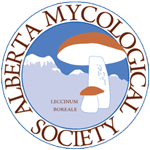
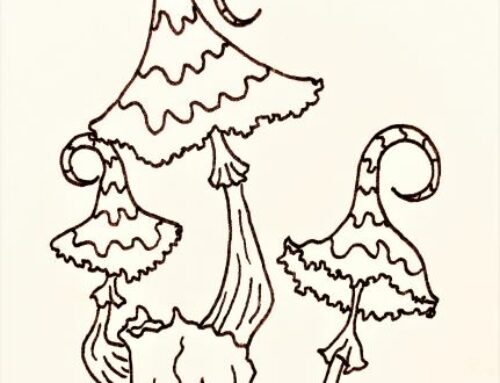
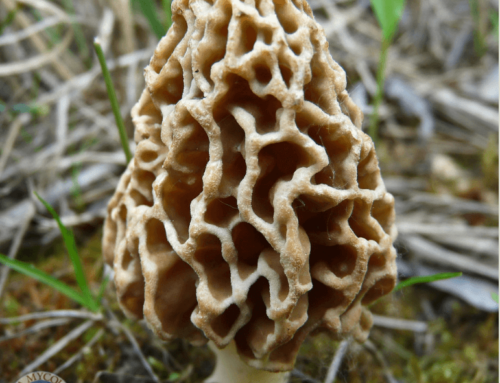
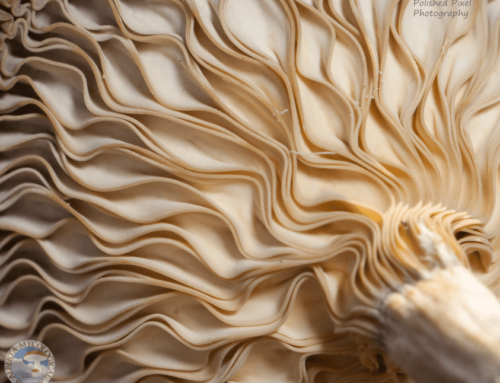
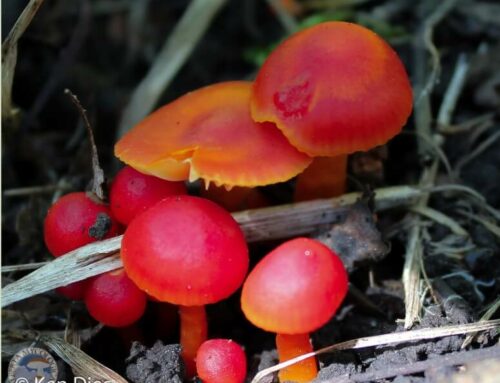
Leave A Comment
You must be logged in to post a comment.